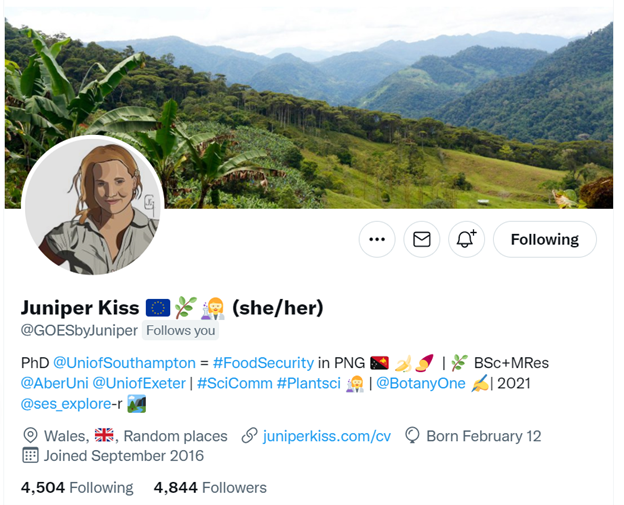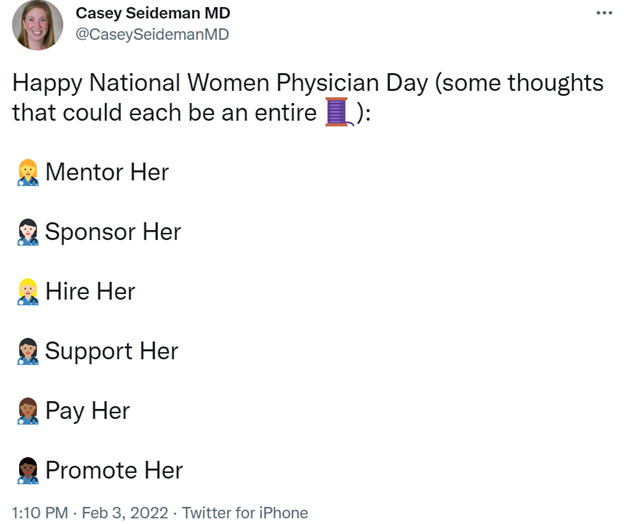In my Twitter profile, I state that I’m “fluent in emoji.” When I wrote that originally, I was mostly joking. I am not laughing any longer. I have come to learn the power of the well-placed emoji, and I am here to explain to you why emojis matter. I believe emojis make our messages more accessible and approachable. They tell a story when used well. They attract the valuable attention of a reader. And they make a message more fun, approachable, and consumable!
The impact and reach of a journal are about a lot more than the Journal Impact Factor. Authors are expecting us to do far more than publish their papers. They want us to make their papers immortal and to ensure that their research is talked about and remembered for years to come. An editorial office that is making great use of varied social media platforms to amplify authors and articles is equally as enticing to submitters. When an editorial office shows off an author’s work, that author remembers how well they were taken care of. Not only was their paper published, but it was celebrated!
But what makes a tweet or a Facebook post or an Instagram story or a LinkedIn blurb stand out from a social media user’s endless scrolling possibilities? There is only so much time in the day. Your social media post needs to stand out from the crowd. Creating videos and graphic assets are important tools in social media, but it’s not feasible to create those for every post. Cleverly selected emojis are an easy way to get eyes on your messages.
Emojis in the Wild
I spend a lot of time thinking about social media for my job. Not only that, I spend a lot of time on social media in a professional capacity. It’s important to understand what other organizations and individuals are doing well. The more I scroll, the more I am convinced of the power of the emoji. I share with you here some examples of stellar emoji use.
The American College of Cardiology, an organization I hold in extremely high regard for their important work to improve heart health, uses the beating heart emoji in their Twitter profile (@ACCinTouch; Figure 1).

Simple, tasteful, perfect placement. I give this emoji use a 10 out of 10. I share this example because I see this organization as very serious—focused on the business of saving lives. However, this one simple heart emoji tells me a lot of things in one single character. They want their community to feel welcome. They want a patient researching a heart condition to belong. They want a physician to feel proud to be a part of their mission.
When I worked at the American Society of Plant Biologists, I bonded quickly (via Twitter, of course) with Dr Juniper Kiss over our shared adoration of emojis. Dr Kiss is a brilliant scientist, but what really makes her stand out is how she makes science accessible to everyone who follows her. Looking at her Twitter profile (Figure 2) provides amazing insight into how Dr Kiss communicates.

Scrolling through her Twitter feed, which is visually beautiful and very compelling, what makes Dr Kiss remarkable is her ability to translate her work to anyone and everyone. Using emojis draws her readers in, but then they stay because her messages are fun to read yet informative. Using the perfect blend of emojis and concise, clear writing, Dr Kiss is able to translate complicated scientific concepts into easily comprehensible nuggets for anyone who follows her, not just scientists. To be a PhD scientist involved in complex research is challenging enough, but Dr Kiss translates that research so anyone outside of plant biology “gets it.”
Using the perfect blend of emojis and concise, clear writing, Dr Kiss is able to translate complicated scientific concepts into easily comprehensible nuggets for anyone who follows her, not just scientists.
Another tweet that I think is a perfect 10 (Figure 3) is from Dr Casey Seideman, a urologist.

On National Women Physician Day, Dr Seideman used emojis to convey her call to action: support women in medicine. This tweet is the chef’s kiss of all tweets. The message is serious and important, yet the emojis made her thoughts stand out and reach far more people than if she had used a text-only approach. I immediately stopped my scrolling when I saw this tweet and really thought about what she was saying.
To Emoji or Not to Emoji?
Like with any other language, you need to be attentive to when it is appropriate to speak emoji. Here are things you will want to consider before you get too crazy with the emoji keyboard:
- Do your research. Who is your audience? Who will be consuming your message? Do you see users in your target community using emojis, too?
- Is there a different way you can entice your audience? Would an excellent visual or a video do a better job of capturing attention?
- Would using emojis be inappropriate or inconsiderate? If you’re trying to draw attention to a sensitive topic, be thoughtful in how you use emojis, if you choose to use them at all.
- Consider your strategy in using emojis. For instance, if you’re tweeting an announcement, you might want to use the siren. If you’re sharing an excellent editorial, I personally suggest the 100 symbol.
- Have fun and experiment! See what kind of engagement you get when you use emojis vs. when you don’t.
Embrace the Emoji
We live in challenging times right now. The people of our world have been suffering through an ongoing global pandemic, war, intense workloads, a polarized country, and so much more. Emojis add a little light to our world. Used well, they provide a visual means to tell a more complicated story. And they are just fun. It’s fun to figure out which ones to use, it’s fun to see how other people use them, and it’s fun to use them creatively. Come find me on Twitter and show me your emojis!
Jennifer Regala is the Director of Publications/Executive Editor at the American Urological Association.
Opinions expressed are those of the authors and do not necessarily reflect the opinions or policies of their employers, the Council of Science Editors, or the Editorial Board of Science Editor.
